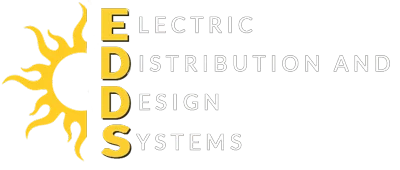Energy-efficient appliances are the main trend, with various technological advancements available nowadays. And since integrating solar energy with smart home systems offers a way to reduce carbon footprints, while combining renewable energy with smart home appliances allows you to gain more control over your energy consumption, it also supports environmental sustainability. This seamless integration is shaping the future of residential energy management
1. Understanding Smart Home Systems
Smart appliances like heating, lighting, and security can make energy consumption more convenient, efficient, and safe by using internet-enabled devices that communicate with each other. Hence, it is crucial to know the type of smart home appliances you have in your homes to integrate them with the new technology and solar panels so that homeowners can use electricity without any tension over high utility bills.
Smart Home Devices:
- Interoperability enables devices to work seamlessly together.
- Voice-activated assistants manage multiple devices.
- Mobile apps allow remote control and monitoring.
- The Role of Solar Energy in Modern Homes
Since solar-powered homes use sunlight, solar energy is an essential element for homes these days, as utility consumption is quite high; homeowners need to start thinking strategically. Solar energy offers a renewable and clean energy source as it converts sunlight into electricity, helping homeowners have less stress from consuming energy and electricity.
Role of Solar Energy:
- Solar energy decreases long-term electricity expenses.
- Excess power can be stored or sold back to the grid.
- It reduces greenhouse gas emissions and environmental impact.
- Panels require minimal maintenance over time.
3. Integrating Solar Energy with Smart Home Systems
Integrating solar energy with smart home systems is a smart option to enhance energy optimization of your homes by allowing smart devices to respond to solar production levels simultaneously. This ensures maximum efficiency and reduces energy waste by becoming sustainable in energy.
Tips for Integrating Solar with Smart Homes:
- Smart thermostats adjust based on solar availability.
- Solar inverters sync with home automation hubs.
- Battery systems optimize usage during non-sunny hours.
- Mobile dashboards show real-time solar performance.
4. Benefits of Integration
Solar energy for homes is always an optimal option because combining smart home tech with solar energy offers not only economic benefits but also environmental advantages. To make it even better, combining it with your smart appliances is just a cherry on top for many homeowners who understand it as early as possible. Now, homeowners can monitor energy usage, increase autonomy, and lower costs effectively.
Benefits may include:
- Real-time monitoring improves decision-making.
- Automation maximizes solar energy consumption.
- Energy independence increases resilience during outages.
- Smart homes can adapt based on solar input trends.
5. Required Equipment and Technologies
To successfully integrate your solar panels with your smart home appliances, some specific devices and infrastructure are necessary for them to work efficiently. As these components only work together, ensuring smooth operation and optimal energy use is better.
Devices include:
- Solar panels: Capture sunlight and convert it to electricity.
- Smart inverters: Convert DC to AC and communicate with intelligent systems.
- Battery storage units: Store excess solar power.
- Smart meters and hubs: Provide real-time data and connectivity.
- Challenges in Implementation
While integrating with home appliances and technology, specific challenges do arise over time if not dealt with in a precautionary manner for solar energy. Such drawbacks include technological compatibility issues with your home appliances, initial solar energy installation costs, and solar and maintenance concerns.
Some common challenges:
- High upfront investment in equipment and installation.
- Regular maintenance and software updates may be required.
- Compatibility problems between solar gear and intelligent systems.
7. Future Trends and Innovations
Integrating solar energy with smart home systems is a continuous innovation and technological advancement, as these are the main key drivers of future trends and innovation. So, as we move ahead in the future, AI, machine learning, and IoT advancements are playing significant roles in transforming home energy management in the coming decade.
Emerging trends include
- AI-based predictive energy usage models.
- Blockchain for peer-to-peer energy sharing.
- Smart EV charging integration with solar.
Conclusion
In conclusion, integrating solar energy with smart home systems is a transformative step toward living sustainably and efficiently. It empowers homeowners with control and responsibility. In the coming years, this integration will redefine how we power and manage our homes, making them more accessible and essential.
FAQs
- What are the main benefits of integrating solar energy with smart home systems?
The main benefits of integrating a solar energy-efficient system with smart homes include increased control, cost savings, energy efficiency, and environmental sustainability. - Can I use existing smart home devices with new solar panels?
Yes, you can, but make sure that the compatibility is verified with smart inverters or hubs that support integration for efficient use. - Do I need a battery to integrate solar with innovative systems?
Not necessarily, but batteries enhance energy storage and improve the overall system’s effectiveness, as they can work even on cloudy days. - How expensive is setting up an integrated solar smart home?
Integrating a solar smart home entirely depends on the size and equipment of your home and solar panel, but long-term savings often outweigh the initial investment. - Is this technology suitable for all types of homes?
This technology is most common in modern homes, as old homes do not have the flexibility to meet today’s needs; hence, modern homes can adopt this technology, but factors like roof size, sunlight exposure, and infrastructure matter.
